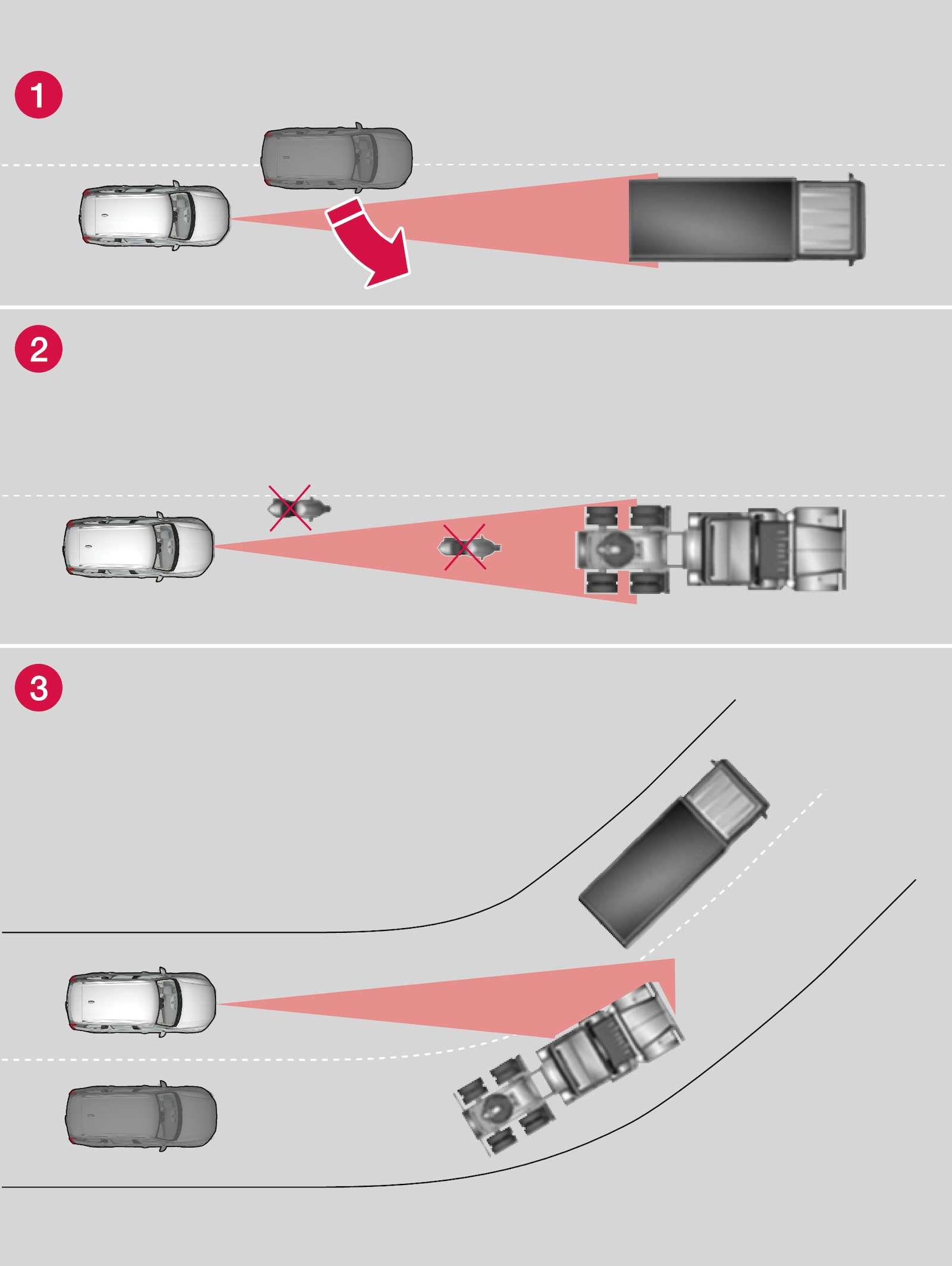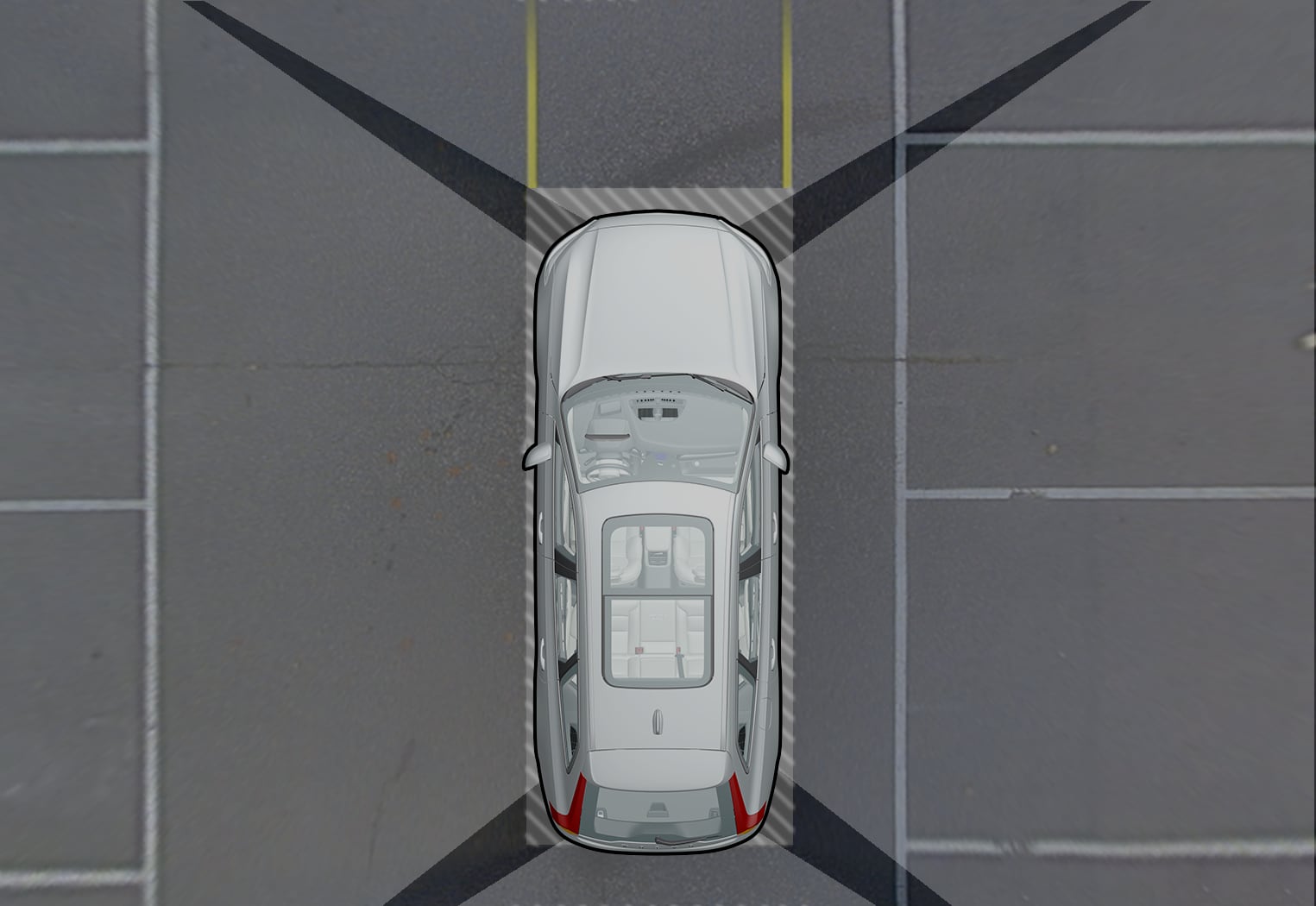Camera and radar unit limitations
Common camera and radar limitations
Cameras and radar are aids for intelligent driving that cannot be called upon to achieve intelligent driving, and necessary safety management must be implemented to avoid traffic safety risks or accidents caused by the driver's incorrect use of cameras and radar.
Obstructed camera
Do not place, affix or mount anything in front of or around the camera and radar units – this could disrupt camera- and radar-based functions. It could cause functions to be reduced, deactivated completely or to produce an incorrect function response.
Damaged windshield
- If there are cracks, scratches or stone chips in front of the unit covering an area of about 0.5 × 3.0 mm (0.02 × 0.12 in.) or more, contact a workshop1 to have the windshield replaced.
- Volvo advises against repairing cracks, scratches or stone chips in the area in front of the unit – the entire windshield should instead be replaced.
- Before replacing the windshield, contact a workshop1 to verify that the right windshield has been ordered and installed.
- The same type of windshield wipers or wipers approved by Volvo should be used for replacement.
- If the windshield is replaced, the camera must be recalibrated by a workshop1 to help ensure proper functioning of all of the vehicle's camera-based systems.
Note
Additional radar limitations
Vehicle speed
The radar sensor's ability to detect a vehicle ahead is significantly reduced if the speed of the vehicle ahead differs greatly from your vehicle's speed.
Limited field of vision
The radar sensor has a limited field of vision. In some situations, it may detect a vehicle later than expected or not at all.

 The radar sensor's detection of vehicles very close to your vehicle may be delayed in certain situations, e.g. if a vehicle pulls in between your vehicle and the vehicle directly ahead.
The radar sensor's detection of vehicles very close to your vehicle may be delayed in certain situations, e.g. if a vehicle pulls in between your vehicle and the vehicle directly ahead. Small vehicles, such as motorcycles, or vehicles that are not driving in the center of the lane may remain undetected.
Small vehicles, such as motorcycles, or vehicles that are not driving in the center of the lane may remain undetected. In curves, the radar may detect the a different vehicle than intended or lose sight of a target vehicle.
In curves, the radar may detect the a different vehicle than intended or lose sight of a target vehicle.
Reduced functionality
In heavy rain or if there is wet snow or ice on the emblem, the radar's functions may be reduced, completely disabled or provide inaccurate responses.
Additional camera limitations
Reduced visibility
Cameras have the same limitations as the human eye. In other words, their “vision" is impaired by adverse weather conditions such as heavy snowfall/rain, dense fog, swirling dust/snow, etc. These conditions may reduce the function of systems that depend on the camera or cause these systems to temporarily stop functioning.
Strong sunlight, reflections from the road surface, ice or snow covering the road, a dirty road surface, or unclear lane marker lines may drastically reduce the camera’s ability to detect the side of a lane, a pedestrian, a cyclist, a large animal or another vehicle.
Bicycle holders or other accessories mounted behind the vehicle may obstruct the camera's view.
Additional Park Assist Camera* limitations
Blind sectors

With the Park Assist Camera's 360° view* selected, objects/obstacles may not be detected if they are located in the "joints" where the edges of the individual camera views meet.
Warning
Lighting conditions
The camera image is automatically adjusted according to the current lighting conditions. This means that the brightness and quality of the image may vary slightly. Poor lighting conditions may result in reduced image quality.